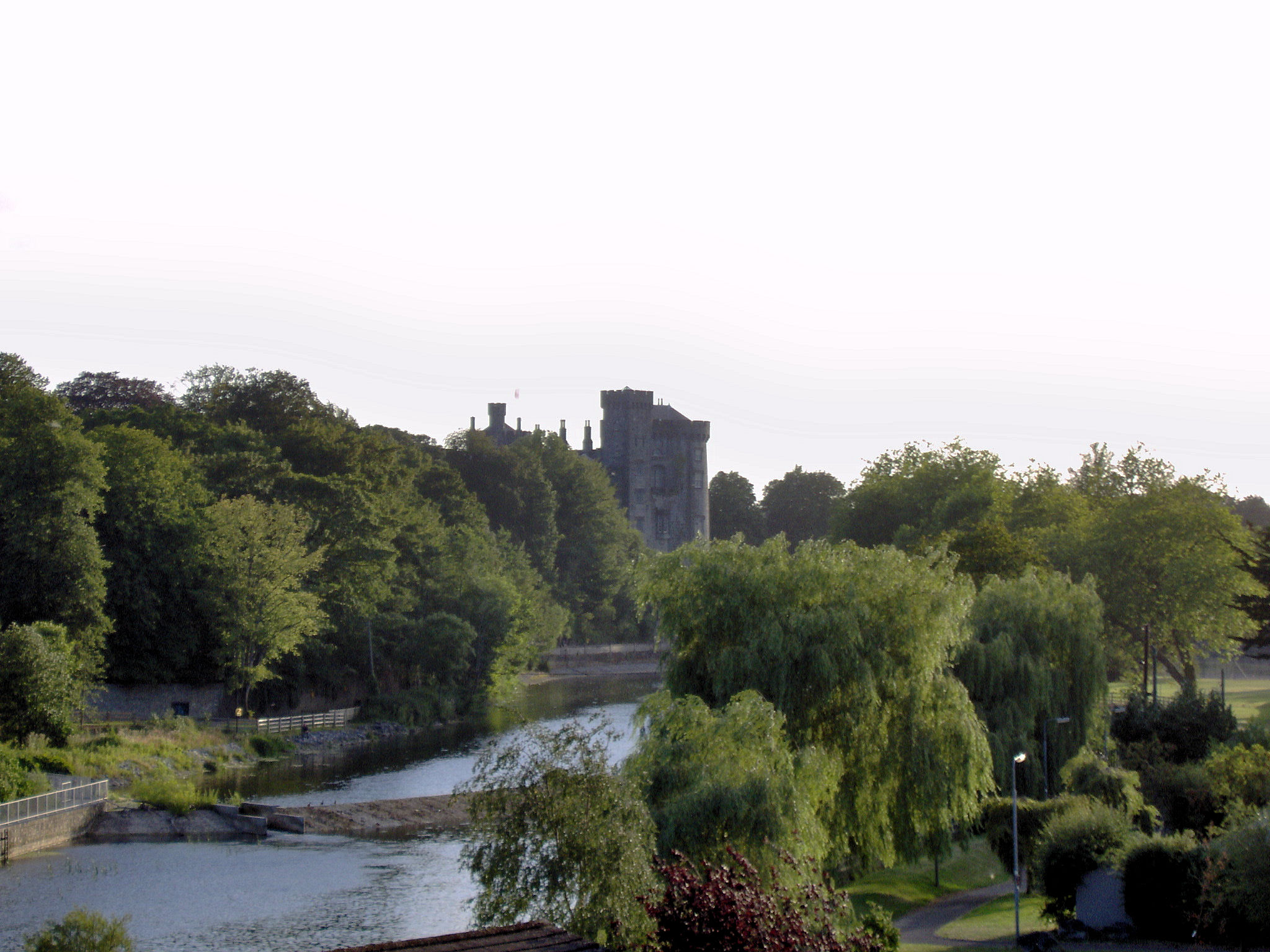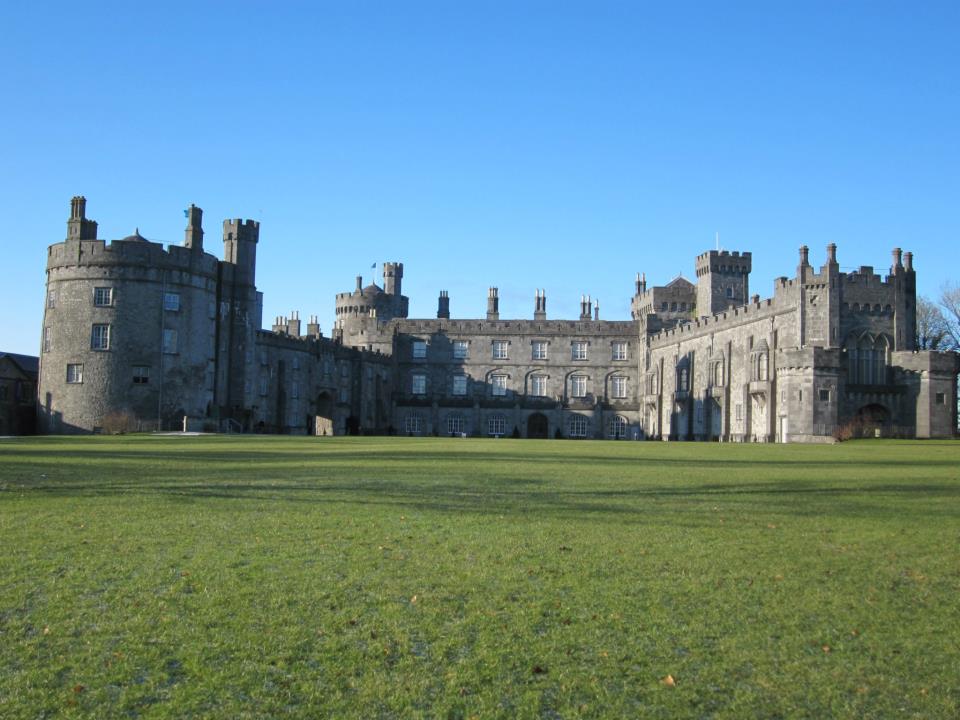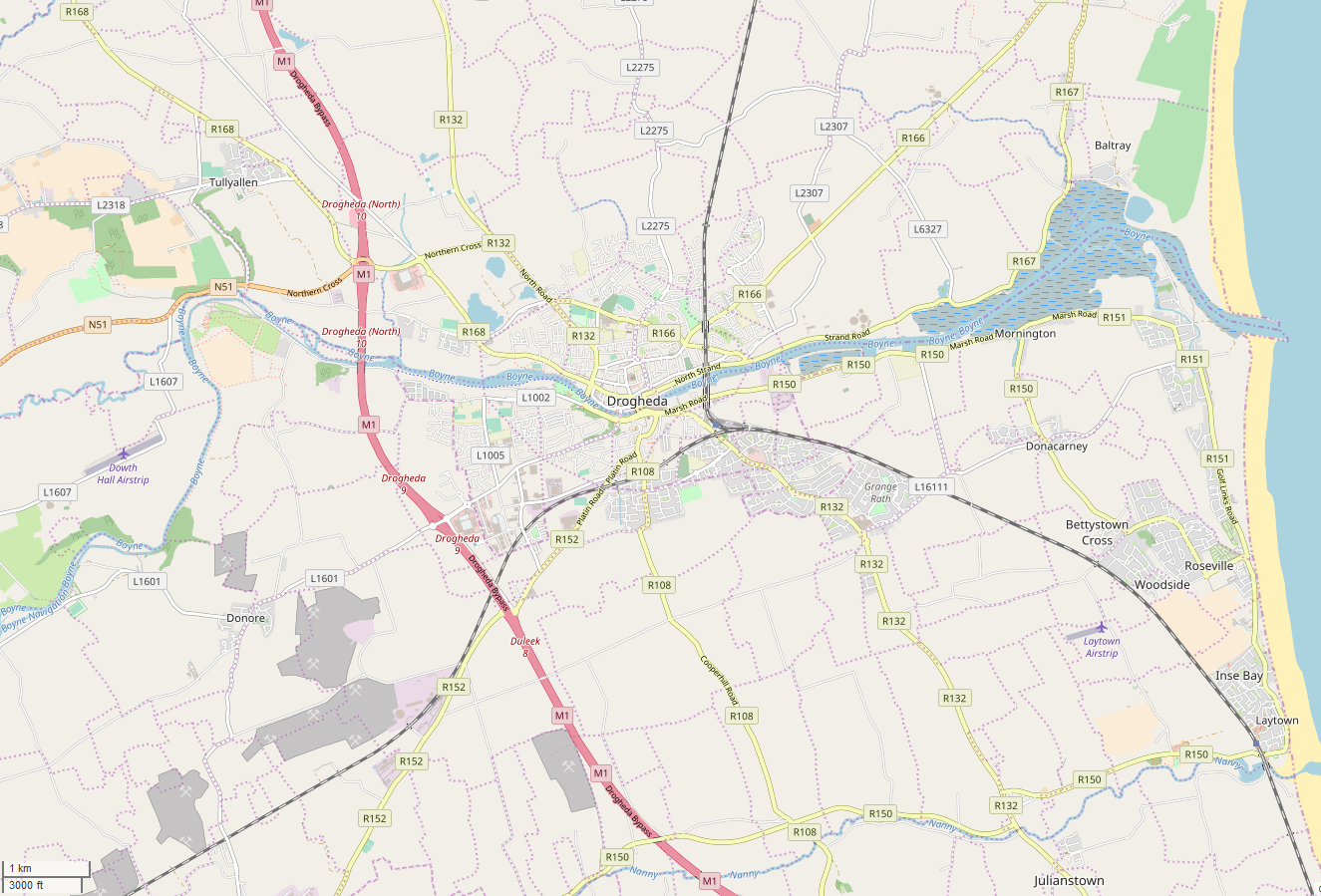|
Sack Of Wexford
The Sack of Wexford took place from 2 to 11 October 1649, during the campaign known as the Cromwellian conquest of Ireland. It was part of the wider 1641 to 1653 Irish Confederate Wars, and an associated conflict of the Wars of the Three Kingdoms. A Roundhead, Parliamentarian force under Oliver Cromwell stormed the town after negotiations broke down, killing most of the garrison. Many civilians also died, either during the sack, or drowned attempting to escape across the River Slaney. Along with Siege_of_Drogheda, Drogheda, Wexford is still remembered as an infamous atrocity. Background On 17 January 1649, the Confederate_Ireland, Catholic Confederation signed a treaty with the James_Butler,_1st_Duke_of_Ormond, Duke of Ormond, Royalist leader in Ireland. Two weeks later, they were joined by Ulster_Protestants, Ulster Presbyterians, who objected to the execution of Charles_I_of_England, Charles I by the newly established Commonwealth_of_England, Commonwealth. This was off ... [...More Info...] [...Related Items...] OR: [Wikipedia] [Google] [Baidu] |
Cromwellian Conquest Of Ireland
The Cromwellian conquest of Ireland or Cromwellian war in Ireland (1649–1653) was the re-conquest of Ireland by the forces of the English Parliament, led by Oliver Cromwell, during the Wars of the Three Kingdoms. Cromwell invaded Ireland with the New Model Army on behalf of England's Rump Parliament in August 1649. Following the Irish Rebellion of 1641, most of Ireland came under the control of the Irish Catholic Confederation. In early 1649, the Confederates allied with the English Royalists, who had been defeated by the Parliamentarians in the English Civil War. By May 1652, Cromwell's Parliamentarian army had defeated the Confederate and Royalist coalition in Ireland and occupied the country, ending the Irish Confederate Wars (or Eleven Years' War). However, guerrilla warfare continued for a further year. Cromwell passed a series of Penal Laws against Roman Catholics (the vast majority of the population) and confiscated large amounts of their land. As punishment for ... [...More Info...] [...Related Items...] OR: [Wikipedia] [Google] [Baidu] |
Arthur Aston (army Officer)
Sir Arthur Aston (1590 – 11 September 1649) was an English professional soldier, most noted for his support for King Charles I in the English Civil War, and in folklore for the gruesome manner of his death in Ireland. He was from a prominent Roman Catholic family originating in Cheshire. He was killed during the Siege of Drogheda during the Cromwellian Conquest of Ireland. Early career in central Europe Aston was the son of another Sir Arthur Aston, of Fulham, Middlesex, and the grandson of Sir Thomas Aston of Aston in Bucklow Hundred, Cheshire.''Biographia Britannica'', v.1, p.242 Aston's father was a professional soldier who had served in Russia in the 1610s, and, being a Catholic, had caught the attention and trust of the Polish king Sigismund III. Arthur Aston senior agreed to raise 2,000 British mercenaries for the Polish crown for the Turkish war of 1621. Though most of these mercenaries bound for Poland were turned back by Protestant Denmark in the Denmark Straits, Ca ... [...More Info...] [...Related Items...] OR: [Wikipedia] [Google] [Baidu] |
Rosslare Harbour
The village of Rosslare Harbour (), also known as Ballygeary, grew up to serve the needs of the harbour of the same name (now called Rosslare Europort), first developed in 1906 by the Great Western Railway and the Great Southern and Western Railway to accommodate steamferry traffic between Great Britain and Ireland. This port also serves France and Spain, traffic is mainly roll-on roll-off (RoRo). Rosslare Harbour railway station opened on 30 August 1906. Village Although the harbour itself is located close to, and for census purposes is co-terminous with, the village of Ballygeary, and within the townland of Ballygillane Big, it was named after the village of Rosslare, some 4 km away (8 km by road) along the coast. The village of Ballygeary was divided into two townlands, one known as 'tin town' and the other as 'straw town'. It is believed this was because of the roofs on the houses. The village has a number of guesthouses, hotels, a Roman Catholic church, a pos ... [...More Info...] [...Related Items...] OR: [Wikipedia] [Google] [Baidu] |
New Ross
New Ross (, formerly ) is a town in southwest County Wexford, Ireland. It is located on the River Barrow, near the border with County Kilkenny, and is around northeast of Waterford. In 2016 it had a population of 8,040 people, making it the fourth-largest town in the county. History The port town of New Ross dates from the pre-Middle Ages. The earliest settlement in this area dates to the 6th century when St. Abban of Magheranoidhe founded a monastery in what is now Irishtown. The original earthen banked circular enclosure of his monastery was visible around the graveyard until it was removed by the council. It was replaced by a concrete wall and steel fence. Its name, ''Ros'', was shortened from ''Ros Mhic Treoin'', or ''the Wood of the Son of Treoin''. New Ross was in the territory of Dermot McMurrough and came to prominence when the Anglo-Normans conquered the region. The Norman knight William Marshall and his bride Isabella de Clare arrived during the early pa ... [...More Info...] [...Related Items...] OR: [Wikipedia] [Google] [Baidu] |
Privateer
A privateer is a private person or ship that engages in maritime warfare under a commission of war. Since robbery under arms was a common aspect of seaborne trade, until the early 19th century all merchant ships carried arms. A sovereign or delegated authority issued commissions, also referred to as a letter of marque, during wartime. The commission empowered the holder to carry on all forms of hostility permissible at sea by the usages of war. This included attacking foreign vessels and taking them as prizes, and taking prize crews as prisoners for exchange. Captured ships were subject to condemnation and sale under prize law, with the proceeds divided by percentage between the privateer's sponsors, shipowners, captains and crew. A percentage share usually went to the issuer of the commission (i.e. the sovereign). Privateering allowed sovereigns to raise revenue for war by mobilizing privately owned armed ships and sailors to supplement state power. For participants, privateerin ... [...More Info...] [...Related Items...] OR: [Wikipedia] [Google] [Baidu] |
Kilkenny
Kilkenny (). is a city in County Kilkenny, Ireland. It is located in the South-East Region and in the province of Leinster. It is built on both banks of the River Nore. The 2016 census gave the total population of Kilkenny as 26,512. Kilkenny is a tourist destination, and its environs include historic buildings such as Kilkenny Castle, St Canice's Cathedral and round tower, Rothe House, Shee Alms House, Black Abbey, St. Mary's Cathedral, Kilkenny Town Hall, St. Francis Abbey, Grace's Castle, and St. John's Priory. Kilkenny is also known for its craft and design workshops, the Watergate Theatre, public gardens and museums. Annual events include Kilkenny Arts Festival, the Cat Laughs comedy festival and music at the Kilkenny Roots Festival. Kilkenny began with an early 6th-century ecclesiastical foundation within the Kingdom of Ossory. Following the Norman invasion of Ireland, Kilkenny Castle and a series of walls were built to protect the burghers of what became a Norman ... [...More Info...] [...Related Items...] OR: [Wikipedia] [Google] [Baidu] |
Drogheda
Drogheda ( , ; , meaning "bridge at the ford") is an industrial and port town in County Louth on the east coast of Ireland, north of Dublin. It is located on the Dublin–Belfast corridor on the east coast of Ireland, mostly in County Louth but with the south fringes of the town in County Meath, north of Dublin. Drogheda has a population of approximately 41,000 inhabitants (2016), making it the List of settlements on the island of Ireland by population, eleventh largest settlement by population in all of Ireland, and the largest town in the Republic of Ireland by both population and area. It is the last bridging point on the River Boyne before it enters the Irish Sea. The UNESCO World Heritage Site of Newgrange is located west of the town. Drogheda was founded as two separately administered towns in two different territories: Drogheda-in-Kingdom of Meath, Meath (i.e. the Lordship of Meath, Lordship and Liberty of Meath, from which a charter was granted in 1194) and Drogheda ... [...More Info...] [...Related Items...] OR: [Wikipedia] [Google] [Baidu] |
Battle Of Rathmines
The Battle of Rathmines was fought on 2 August 1649, near the modern Dublin suburb of Rathmines, during the Irish Confederate Wars, an associated conflict of 1638 to 1651 Wars of the Three Kingdoms. It has been described as the 'decisive battle of the Engagement in Ireland.' In late July 1649, a combined Irish Confederate/Royalist army under the Earl of Ormond, tried to capture Dublin, held by forces loyal to the Commonwealth, commanded by Michael Jones. Despite their superior numbers, Ormond's troops were routed by Jones' veterans, many of whom were members of the New Model Army. Their victory secured Dublin, enabling another 12,000 troops under Oliver Cromwell to land unimpeded, and begin the Cromwellian conquest of Ireland. Background The Irish Rebellion of 1641 led to the establishment of the Catholic Confederation, based in Kilkenny, and the Irish Confederate Wars. From 1641 to 1643, the main struggle was between the Confederation and Irish and English Royalists ... [...More Info...] [...Related Items...] OR: [Wikipedia] [Google] [Baidu] |
Charles II Of England
Charles II (29 May 1630 – 6 February 1685) was King of Scotland from 1649 until 1651, and King of England, Scotland and Ireland from the 1660 Restoration of the monarchy until his death in 1685. Charles II was the eldest surviving child of Charles I of England, Scotland and Ireland and Henrietta Maria of France. After Charles I's execution at Whitehall on 30 January 1649, at the climax of the English Civil War, the Parliament of Scotland proclaimed Charles II king on 5 February 1649. But England entered the period known as the English Interregnum or the English Commonwealth, and the country was a de facto republic led by Oliver Cromwell. Cromwell defeated Charles II at the Battle of Worcester on 3 September 1651, and Charles fled to mainland Europe. Cromwell became virtual dictator of England, Scotland and Ireland. Charles spent the next nine years in exile in France, the Dutch Republic and the Spanish Netherlands. The political crisis that followed Cromwell's death in 1 ... [...More Info...] [...Related Items...] OR: [Wikipedia] [Google] [Baidu] |
Dublin
Dublin (; , or ) is the capital and largest city of Republic of Ireland, Ireland. On a bay at the mouth of the River Liffey, it is in the Provinces of Ireland, province of Leinster, bordered on the south by the Dublin Mountains, a part of the Wicklow Mountains range. At the 2016 census of Ireland, 2016 census it had a population of 1,173,179, while the preliminary results of the 2022 census of Ireland, 2022 census recorded that County Dublin as a whole had a population of 1,450,701, and that the population of the Greater Dublin Area was over 2 million, or roughly 40% of the Republic of Ireland's total population. A settlement was established in the area by the Gaels during or before the 7th century, followed by the Vikings. As the Kings of Dublin, Kingdom of Dublin grew, it became Ireland's principal settlement by the 12th century Anglo-Norman invasion of Ireland. The city expanded rapidly from the 17th century and was briefly the second largest in the British Empire and sixt ... [...More Info...] [...Related Items...] OR: [Wikipedia] [Google] [Baidu] |
Eoghan Ruadh Ó Néill
Owen Roe O'Neill (Irish: ''Eoghan Ruadh Ó Néill;'' – 1649) was a Gaelic Irish soldier and one of the most famous of the O'Neill dynasty of Ulster. O'Neill left Ireland at a young age and spent most of his life as a mercenary in the Spanish Army serving against the Dutch in Flanders during the Eighty Years' War. After the Irish Rebellion of 1641, O'Neill returned and took command of the Irish Confederate Ulster Army. He is known for his victory at the Battle of Benburb in 1646. O'Neill's later years were marked by infighting amongst the Confederates, and in 1647 he led his army to seize power in the capital of Kilkenny. His troops clashed with rival forces of the Confederacy, leading to O'Neill forming a temporary alliance with Charles Coote's English Parliamentary forces in Ulster. He initially rejected a treaty of alliance between the Confederates and the Irish Royalists, but faced with the Cromwellian invasion he changed his mind. Shortly after agreeing an alliance with ... [...More Info...] [...Related Items...] OR: [Wikipedia] [Google] [Baidu] |
Calvinism
Calvinism (also called the Reformed Tradition, Reformed Protestantism, Reformed Christianity, or simply Reformed) is a major branch of Protestantism that follows the theological tradition and forms of Christian practice set down by John Calvin and other Reformation-era theologians. It emphasizes the sovereignty of God and the authority of the Bible. Calvinists broke from the Roman Catholic Church in the 16th century. Calvinists differ from Lutherans (another major branch of the Reformation) on the spiritual real presence of Christ in the Lord's Supper, theories of worship, the purpose and meaning of baptism, and the use of God's law for believers, among other points. The label ''Calvinism'' can be misleading, because the religious tradition it denotes has always been diverse, with a wide range of influences rather than a single founder; however, almost all of them drew heavily from the writings of Augustine of Hippo twelve hundred years prior to the Reformation. The na ... [...More Info...] [...Related Items...] OR: [Wikipedia] [Google] [Baidu] |
.jpg)

_p223_Map_of_New_Ross%2C_c.1680.jpg)




